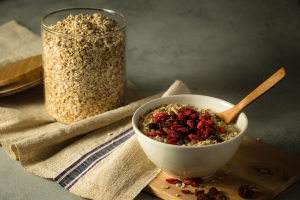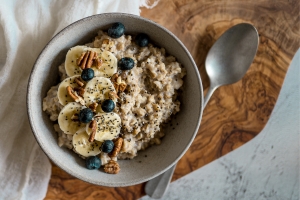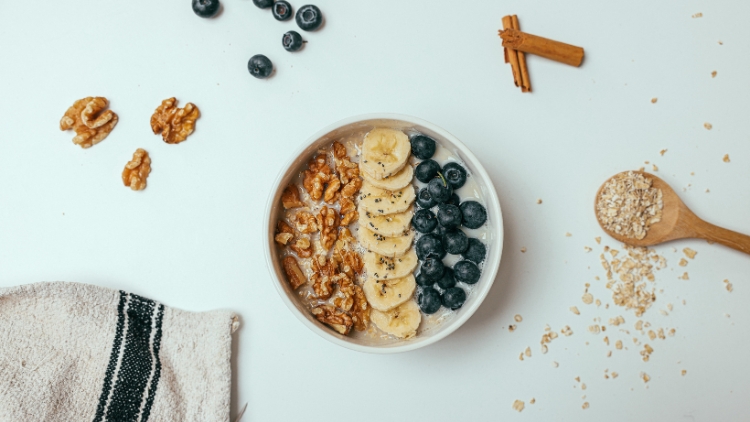Okay, let’s be honest – the world of low-carbohydrate diets can be seriously confusing. Keto, Atkins, low-carb… they all sound similar, right? They all promise weight loss and better health by cutting back on those pesky carbs, but the devil, as they say, is in the details. I’ve been down this road myself, trying to figure out which approach would actually work for me and my lifestyle, and trust me, it took some digging!
So, let’s break it down and untangle this web of dietary choices, so you can find the best fit for your goals and preferences.
The Secret Key: How Carbs Impact Your Body

The core concept behind all these diets is reducing carbohydrate intake. Carbs, found in foods like bread, pasta, fruit, and sugary treats, are your body’s primary source of energy. When you drastically reduce them, your body starts looking for alternative fuel sources. This is where the magic (or, well, the science!) happens. Your body shifts into using stored fat, which can lead to weight loss.
The Ultimate Showdown: Keto vs. Low-Carb vs. Atkins

Let’s break down each diet, focusing on what you eat, what you avoid, and the macronutrient breakdown:
The Ketogenic Diet (Keto)
- Ketosis: A metabolic state where your body burns fat for fuel instead of carbs.
- Carb Intake: Very low, 20-50 grams per day.
- No Phases: It’s a continuous state.
- Goal: Induce and maintain ketosis.
- Macros: Fat: 70-80%, Protein: 10-20%, Carbs: 5-10% of daily calories.
- Allowed: Healthy fats (avocado, olive oil, nuts, seeds, full-fat dairy), moderate protein (meat, fish, eggs, tofu), non-starchy vegetables (leafy greens, broccoli, cauliflower), some berries (small portions).
- Forbidden: Grains (bread, pasta, rice), sugars (honey, maple syrup, refined sugar), most fruits, starchy vegetables (potatoes, yams), legumes, low-fat dairy, many processed “low-carb” foods.
Low-Carb Diets (General)
- Carb Intake: Flexible, generally under 100-150 grams per day.
- No Phases: Long-term reduction.
- Goal: Sustainable carb reduction and improved health.
- Macros: Fat: 30-50% (variable), Protein: 20-30%, Carbs: 20-40% of daily calories.
- Allowed: All keto-allowed foods, plus more fruits (berries, small portions of others), some starchy vegetables (small portions), legumes (in moderation), whole grains (in moderation).
- Forbidden: Refined grains (white bread, pasta, rice), sugary drinks, processed foods high in sugar/refined carbs, large portions of starchy vegetables.
The Atkins Diet
- Carb Intake: Starts very low (around 20 grams), gradually increases.
- Four Phases: Induction (very low carb), Balancing, Pre-Maintenance, Lifetime Maintenance.
- Goal: Kickstart weight loss, then find a sustainable carb level.
- Macros: Varies by phase; Induction is similar to keto (high fat, very low carb), later phases gradually increase carbs.
- Allowed (Varies by Phase): Induction: Like keto – non-starchy vegetables, protein, healthy fats. Balancing: Adds nuts, seeds, berries, some higher-carb vegetables. Pre-Maintenance: Introduces small portions of legumes, fruits, whole grains. Lifetime Maintenance: Personalized carb intake for weight maintenance.
- Forbidden (Varies by Phase): Induction is similar to keto (very restrictive). Later phases reintroduce some foods, but still limit refined grains and sugars.
Pros and Cons of Each Diet

Let’s weigh the good and the bad:
Keto:
- Pros: Potentially fast weight loss, appetite control.
- Cons: Can be difficult to stick to long-term, potential side effects (like the “keto flu” – headaches, fatigue).
General Low-Carb:
- Pros: More flexible than keto, easier to maintain long-term, wider variety of foods.
- Cons: Weight loss might be slower than with keto, requires mindful portion control.
Atkins:
- Pros: Structured approach, gradual reintroduction of carbs helps find personal tolerance.
- Cons: The initial phase can be very restrictive, requires careful tracking of carbs.
Adding a Touch of Science

Understanding the science behind different diets can help you make informed choices. Numerous studies have examined the effects of low-carb, ketogenic, and Atkins-style diets, comparing them to traditional low-fat approaches. Here’s what the research says:
Weight Loss
- Low-Carb vs. Low-Fat: A BMJ study analyzed 121 trials (over 21,000 participants!) and found that low-carb diets led to faster weight loss and better metabolic markers than low-fat diets. However, by 12 months, differences were smaller.
- Atkins vs. Other Diets: A New England Journal of Medicine study compared Atkins, Zone, Ornish, and a low-fat diet. Atkins showed the most weight loss at 12 months but required strong adherence.
Diabetes & Blood Sugar Control
- Keto & Type 2 Diabetes: A 2022 study in Diabetes Therapy found that a ketogenic diet significantly lowered blood sugar and reduced the need for medication in diabetics.
- Atkins & Insulin Sensitivity: Research shows that the Atkins diet improves insulin sensitivity, reducing risk factors for diabetes over time.
The takeaway? Science supports the effectiveness of low-carb and ketogenic diets for weight loss and metabolic health, but sustainability and individual preferences play a crucial role. The best diet is the one you can stick to long-term while meeting your health goals.
Making it Personal: Which Diet is Right for YOU?

This is where it gets real! There’s no one-size-fits-all answer. It truly depends on your:
- Goals: Are you gunning for rapid weight loss, or is sustainable, long-term change your priority?
- Lifestyle: Are you a busy mom with no time for complex cooking? A low-carb approach might be more your speed due to its flexibility. Do you love a challenge and want fast results? Maybe try keto for a month, under the guidance of a doctor.
- Preferences: Can you happily ditch fruit? If the answer is a resounding “no,” keto probably isn’t your best bet!
Sample Meal Plans: A Day in the Life

To give you a clearer picture, here are examples of what a typical day might look like on each diet:
Keto Meal Plan
- Breakfast: Scrambled eggs with cheese and spinach, cooked in coconut oil.
- Lunch: Salad with grilled chicken, avocado, and a full-fat dressing.
- Dinner: Salmon baked with asparagus and a side of cauliflower mash.
- Snacks: A handful of macadamia nuts, celery sticks with cream cheese.
Low-Carb Meal Plan
- Breakfast: Greek yogurt with berries and a sprinkle of almonds.
- Lunch: Large salad with grilled chicken or tofu, mixed vegetables, and a light vinaigrette.
- Dinner: Chicken stir-fry with plenty of non-starchy vegetables and a small portion of brown rice.
- Snacks: Apple slices with peanut butter, a small handful of trail mix.
Atkins Meal Plan (Induction Phase)
- Breakfast: Omelet with cheese and ham.
- Lunch: Tuna salad (made with mayonnaise) on a bed of lettuce.
- Dinner: Steak with a side salad and a small amount of green beans.
- Snacks: Cheese slices, a few olives.
Atkins Meal Plan (Maintenance Phase)
- Breakfast: Eggs with bacon and a small serving of berries.
- Lunch: Chicken Caesar salad (with limited croutons).
- Dinner: Roasted chicken with a larger portion of mixed vegetables and a small serving of quinoa.
- Snacks: A small handful of almonds, a piece of fruit.
Common Mistakes and How to Avoid Them

Let’s talk about some pitfalls and how to navigate them:
- Keto Mistake: Eating too much protein. This can kick you out of ketosis. Focus on getting the majority of your calories from healthy fats.
- Low-Carb Mistake: Unintentionally overdoing it on fats. While healthy fats are good, they’re still calorie-dense. Be mindful of portion sizes.
- Atkins Mistake: Rushing through the phases. Don’t jump to the next phase until your weight loss has stabilized.
Helpful Tips:
- Hydrate: Drink plenty of water throughout the day.
- Electrolytes: Replenish electrolytes (sodium, potassium, magnesium), especially on keto.
- Track Your Carbs: Use a food tracking app to stay within your limits.
- Fiber: Eat your vegetables to get the fiber.
Transitioning Between Diets

Thinking of switching things up? Here’s how to do it safely:
- Keto to Low-Carb: Gradually increase your carb intake by 10-20 grams per day each week, focusing on adding non-starchy vegetables and small portions of fruit.
- Atkins Induction to Balancing: Follow the Atkins guidelines for reintroducing carbs slowly, paying close attention to how your body responds.
Vitamins, Minerals, and Staying Nourished

Low-carb diets can sometimes lead to lower intakes of certain nutrients. Here’s how to address that:
- Fiber: Prioritize non-starchy vegetables like leafy greens, broccoli, and cauliflower.
- Potassium: Include foods like avocados, spinach, and mushrooms.
- Magnesium: Consider a magnesium supplement, especially on keto.
- Other Vitamins: A good multivitamin can help fill any gaps.
Maintaining Your Results: The Long Game

Once you’ve reached your weight loss goal, the key is maintenance! Here are some strategies:
- Moderate Low-Carb: Transition to a sustainable, moderate low-carb approach.
- Regular Weigh-Ins: Keep track of your weight to catch any upward trends early.
- Mindful Indulgence: Allow yourself occasional treats, but be mindful of portion sizes.
- Listen to Your Body: Pay attention to hunger and fullness cues.
Important Health Considerations

It’s crucial to be aware of who shouldn’t jump into these diets without professional guidance:
- Keto: Generally not recommended for individuals with kidney disease or pregnant women without close medical supervision.
- Atkins: Similar cautions as keto, especially during the initial, very low-carb phase.
- General Low Carb: Can be suitable for a lot of people.
And don’t forget about supplements! On keto, you might need magnesium and sodium supplements to combat fatigue and maintain electrolyte balance.
Your Action Plan: Choosing the Right Path

Here are three steps to help you decide:
- Define Your Goal: Are you prioritizing speed or long-term sustainability?
- Test Your Tolerance: Honestly assess how restrictive you’re willing to be with your food choices.
- Consult a Doctor: Especially if you have any underlying health conditions, get professional advice before making significant dietary changes.
My Final Thoughts
Choosing between keto, low-carb, and Atkins can feel overwhelming, but it doesn’t have to be! Take your time, do your research, and listen to your body. Don’t be afraid to experiment (within safe limits, of course!) and find what truly works for you. And remember, sustainable changes are always better than quick fixes. You’ve got this!
Share in the comments: Which diet do you think might be the best fit for you and why? I’d love to hear your thoughts!






